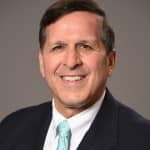And why your practice’s systems are key to determining your practice’s efficiency
By Roger P. Levin, DDS
Believe it or not, the orthodontic practice is one of the least efficient in dentistry in terms of scheduling. Please do not take this as an insult or criticism as it is not meant to be. It is not to say that orthodontic practices are highly inefficient as much as to say that other types of practices, such as oral surgery and endodontics, tend to be more efficient. Why would the orthodontic practice be less efficient than other specialty practices?
Systems, systems, systems
The first point I would like to make is that regardless of the level of efficiency of a specific orthodontic practice it is all about systems. Systems determine efficiency, patient flow, patient volume, completed treatment, production, revenue, and even income. Systems also determine how time is spent, staff satisfaction, and customer service.
Understanding systems is easy. They need to be documented, proven and step-by-step and here’s why.
- Documented means that the systems are written down and can be easily accessed by current team members to improve their performance and efficiency, and by new team members to increase the speed of their training by 100%. Documented means that the systems are also comprehensive. Simply fixing one system, such as scheduling, is a mistake. All systems integrate and influence other systems and a chain is only as good as its weakest link. Practices that want to begin to maximize efficiency must do so through the design of highly efficient systems that are documented.
- Proven means that the systems exist somewhere else and are working extremely well. As orthodontics begins to face many new competitive challenges (despite 2021 having been an excellent year) practices do not have 4 or 5 years to waste trying different combinations within systems to see what works—and they may never figure it out.
- Step-by-step means that the systems themselves become instruction and training manuals. If the systems are written the way an instruction manual is written, step-by-step, then staff members will be able to train faster, better, and deeper. It will be easy to review systems to know exactly what to do, identify the right script within the system to use, and maximize efficiency which maximizes everything else.
The Benefits of Efficiency
Consider this example of a practice using 30-minute check appointments for every patient. The origin of the 30 minutes was unknown, but this is how their schedule was built. Simply by saving 10 minutes an hour the practice, which was available 4 days a week to see patients, was able to add 32 days per year (2 full months) of extra production time. In this case, the practice was able to save 20 minutes per hour immediately which led to an extra 4 months per year of production time. This is a huge win for the practice and only one example of how analysis and efficiency in systems design will improve practice performance.
Every aspect of the practice should be examined for efficiency. Scheduling is often the first system to be addressed as it is the command-and-control system that influences all other systems. But there are numerous other factors as well.
In another case study we saw a practice that had a 14% overdue case completion rate (often referred to as the debond rate.) We quickly implemented a system to reduce this to under 3% within 90 days and were able to accomplish it. This means that 11% fewer patients needed to be seen. This not only opened up significant additional chair time, but also reduced overhead (overdue debonds are 100% overhead expense) which directly increases profit and practice income.
Another benefit of highly efficient systems is the staff will be less frustrated. Orthodontists genuinely enjoy working with, and care about, their teams. But they don’t spend a lot of time thinking about what is frustrating the team and how to eliminate it. Inefficiency frustrates the team. It frustrates the team because things don’t always go well, tasks cannot be completed, and results can be missed. Most orthodontic staff are good and care about getting their jobs done well, but the goal is to get them to be great. Efficiency can make all the difference.
Summary
The above are just a few examples of the benefits of systems. The biggest example is that the march toward financial independence for doctors will stay on track or accelerate if the practice implements documented, proven, step-by-step systems to increase efficiency.
In addition to the financial benefit, perhaps equal is being able to enjoy the practice and your orthodontic career. I personally believe that if you are not having fun over a long period of time you need to question what you are doing. When you implement highly efficient orthodontic practice systems the practice becomes much more enjoyable, you look forward to going to work and it may become one of your favorite places to be. OP

Roger P. Levin, DDS, is the CEO and founder of Levin Group, a leading practice management consulting firm that has worked with over 30,000 practices to increase production. A recognized expert on orthodontic practice management and marketing, he has written 67 books and over 4,000 articles and regularly presents seminars in the United States and around the world. To contact Levin or to join the 40,000 dental professionals who receive his Practice Production Tip of the Day, visit levingroup.com or email [email protected].
Photo 143078641 © Andrii Yalanskyi | Dreamstime.com










